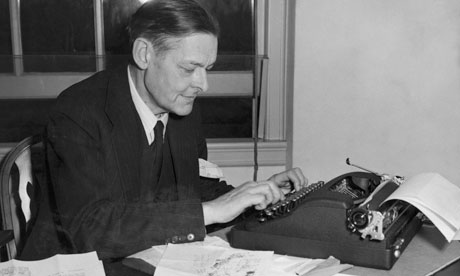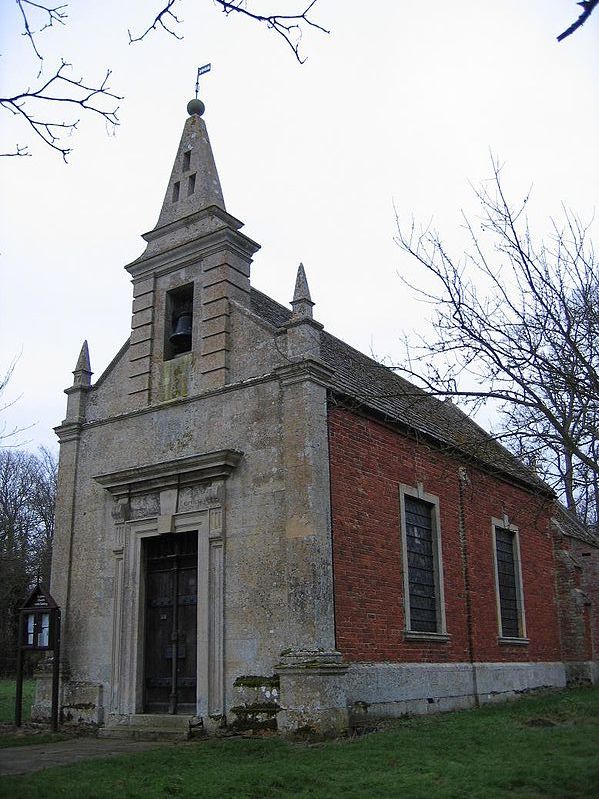
We shall not cease from exploration
And the end of all our exploring
Will be to arrive where we started
And know the place for the first time.
These lines from the last section of the Four Quartets are perhaps the best known lines in all of T.S. Eliot and have been famously quoted many times in many sources.
On a beautiful sunny day in September 2016 Anthony Blake led a small group of us on a T.S. Eliot pilgrimage around southern England. Anthony Blake, a long time student of John Bennett, is a teacher in the Fourth Way tradition and the author of many volumes, his latest titled, A Gymnasium of Beliefs in Higher Intelligence. He has also recorded a large catalogue of spoken word CDs, many accompanied by music. These include all of Gurdjieff’s books and many classics in world literature. His emphasis has been on the great poets such as William Blake, Rilke, Whitman, and T.S. Eliot.
We started at Salisbury Cathedral where we saw two works of etched glass that were inspired by and included quotes from the Four Quartets. We went on from there to Little Gidding with a quick stop at Stonehenge which was on the way. Each of the Four Quartets is set in a specific location: one in the village of East Coker, one in Burnt Norton, one in America and one in the community of Little Gidding. Anthony had already visited East Coker and Burnt Norton is a private estate that is not open to the public. So we determined we must find and visit Little Gidding. Upon arrival we discovered that Little Gidding is a small stone chapel, a house that provides services for the guests who come to visit and a couple of other houses that are rented to people associated with the place. There is no real town, or even a village, just these four buildings, along with a few small outbuildings. It is about 40 miles northwest of Cambridge well off the main roads. It is so small that it doesn’t appear on the maps, however it is in the vicinity of Great Gidding and Steeple Gidding which do show up on the maps. The total population of Little Gidding is twenty people and it consists of 724 acres. Luckily we had a rental car with a GPS and we were amazed as the GPS took us deeper and deeper into the English countryside, back narrow one lane roads with hedges on both sides taller than the car and finally into a small parking lot with a sign that said Little Gidding. Little Gidding is best known as the title of T.S. Eliot’s fourth and most famous section of his book of poetry titled Four Quartets. Little Gidding was published first as a pamphlet in 1942 and then with the Four Quartets.
Gidding is derived from the word “giddy” which means, among other things, possessed by a god, insane, elf-possessed, mad, foolish, dizzy, mentally intoxicated, elated to thoughtlessness and over excited. Little Gidding has been described as a “thin place” where there is only a slim veil between time and eternity. The name is also associated with the family of a man called Gydda who originally settled the local community. The original structure was a manor house that was built around 1196, later a small chapel was built near the manor house and was associated with the Knights Templar. The property was purchased by Nicholas Ferrar around 1622 with money he made investing in the Virginia Colony. When these investments went under he lost the bulk of his wealth and took his family to live in Little Gidding where they lived a strict life of religious devotion. Nicholas was an ordained Deacon in the Anglican Church. At the time they bought the manor house the church was in decay and he rebuilt it as their private chapel. The religious community consisted of Nicholas and his brother John, their mother and their sister Susanna Collett and her husband and their fourteen children. Two of these children, two sisters, dedicated their lives to religious pursuits and never married. They would pray six times a day and do prayers in the chapel through the night with different family members doing shifts in the chapel until sunrise. They read from the Book of Common Prayers, from the New Testament and the Book of Psalms and sang hymns. They also observed fast days. Their worship was based on strict adherence to Christian principles in accordance with the Church of England. The religious community lasted until 1657 when the last Ferrar brother past away. It was strictly a family worship center and did not attempt to recruit others except that one of their principles was to support the poor but for the poor to get any assistance they had to demonstrate their piety and attend church services.
When word circulated of these practices people began to refer to Little Gidding as a nunnery. This caused some notoriety and they were investigated by the Puritans who sent Edward Lenton in 1634 to determine if they were hidden Catholics or heretics. He made a report to the church authorities clearing them of heresy but gave them a stern lecture that they should be working instead of living a life of idleness and encouraged the two virgins to marry. King Charles I made three visits to Little Gidding when he was forced out of London. The Ferrar brothers had known the King as a result of their dealings with the Virginia Company and when he was forced to abandon the throne he came to Little Gidding seeking refuge. He didn’t stay long and quickly left for Scotland where he hoped he would find safety. However he was forced from his exile and executed in 1649. After the death of the last of the Ferrar brothers the church was neglected for many years and then torn down and rebuilt in 1714. This building was restored in 1853 and is the building we see today. Some of the trappings and decorations inside the church are those donated by the Ferrar family. The old manor house is long gone and, other than the chapel, the three other buildings are relatively new with one being a home for the Little Gidding Trust along with the two residences.

This history of Little Gidding drew T. S. Eliot to visit on May 21, 1936. Eliot was a convert to Anglicanism and was a member of the Society of King Charles who he considered a martyr. It was six years after this visit before he published Little Gidding as the last of his Four Quartets. Little Gidding’s place in history and its interest to T.S. Eliot was because it had housed the small Anglican religious community established in 1626 by Nicholas Ferrar along with his two siblings and their extended families.
When we found our way to Little Gidding it was not what we had anticipated, the old chapel is only a shell, the words of Eliot’s poetry only a seed whose meaning was altered as it germinated in our minds. Being there altered all sense of time and place. We were not there to verify or instruct or inform some stale curiosity. As we walked up to the main entrance we saw the words the gate of heaven inscribed in stone over the door. Entering the chapel the air seemed suspended, the story ended. Then the silent spirit of indwelling fire stirred and our soul’s sap quivered, we felt restored, refined with a feeling that all attachments were suspended, we felt detached from other things and persons, not indifferent toward them, rather liberated, beyond desire, all motives purified. It was a bell rung backwards, a silence constituted by the riddle of redemption. We were at our journey’s end which we recognized as an epitaph and a resurrection. The dead who had gone before were there with us. We were drawn by a calling to explore this place and knew that the end of our journey was also our beginning. It was a knowledge renewed in a still moment, feeling now, here, always in a condition of utter simplicity for which we had to sacrifice everything and that, in this sacrifice, all would be well. We were infolded in tongues of fire that spoke a language that transformed all that we saw, all that we heard, all that we felt, all that we thought in a timeless moment at the intersection of a pattern of timeless moments.
The poem Little Gidding is full of contradiction and contrariety, it seeks to define being in a new way, in a non-ordinary way. For being not to be is impossible, yet being itself is beyond comprehension. No single class of phenomena, no particular, can encompass being which encloses them all yet is not limited by any. Being is one and affirms itself, is its only predicate. We dare not arrogate it to any particular anymore that we can own the air or enclose the sky. Just as light passing through a prism breaks into all the colors in the spectrum so ‘to be’ breaks into all the words expressed in language. Just as invisible light enfolds all colors, invisible being enfolds all particulars. The poet bears witness to it in words that are a testament and a befuddlement of silence. Being dwells in us but only as we dwell in it. Trying to understand it is a type of madness, a divine frenzy. Awareness shrinks from direct contact with being, with the almighty ‘to be’ for which there is no map. It is intellectually humbling and goes off the charts, outside the community of fellowship, and to show others the route is as silly as showing how to see light. It is the unassailable premise, this photochromatic metaphysics is the foundation Eliot was building on. Each word we use, each thing we perceive is bathed in the light of this being and stands out for what it is in this radiance. Eliot was drawing on the mysticism he found in St John of the Cross, in Dante and in the Lady Julian of Norwich which he studied in Evelyn Underhill’s book Mysticism published in 1911. Little Gidding is a struggle to get out of purgatory and just as Virgil, when taking his leave of Dante at the top of purgatory received a crown and a mitre so Little Gidding is Eliot’s crown and his mitre. ♦
Bibliography
Anthony Blake, A Gymnasium of Beliefs in Higher Intelligence, DuVersity Publications, Charlestown, WV. 2010. (See my review in Parabola, Volume 36, No. 1, Spring 2011, p. 98 -113.)
T.S. Eliot, Collected Poems, 1009 – 1962, Faber and Faber Ltd., London, 1963.
Graham Pechey, Tongues of Fire: Word and Being in T.S. Eliot’s Four Quartets, T.S. Eliot Society, Cambridgeshire, 2015.
Evelyn Underhill, Mysticism: The Nature and Development of Spiritual Consciousness, Oneworld Publications, Oxford, 1993.
Anthony Blake’s rendition of Little Gidding can be found at youtube.com, just put in Anthony Blake Little Gidding and you can see a video of a reading of selections from the poem recorded in the chapel and the grounds around it.
[youtube id=”6-_-ZGOQdmY”]
